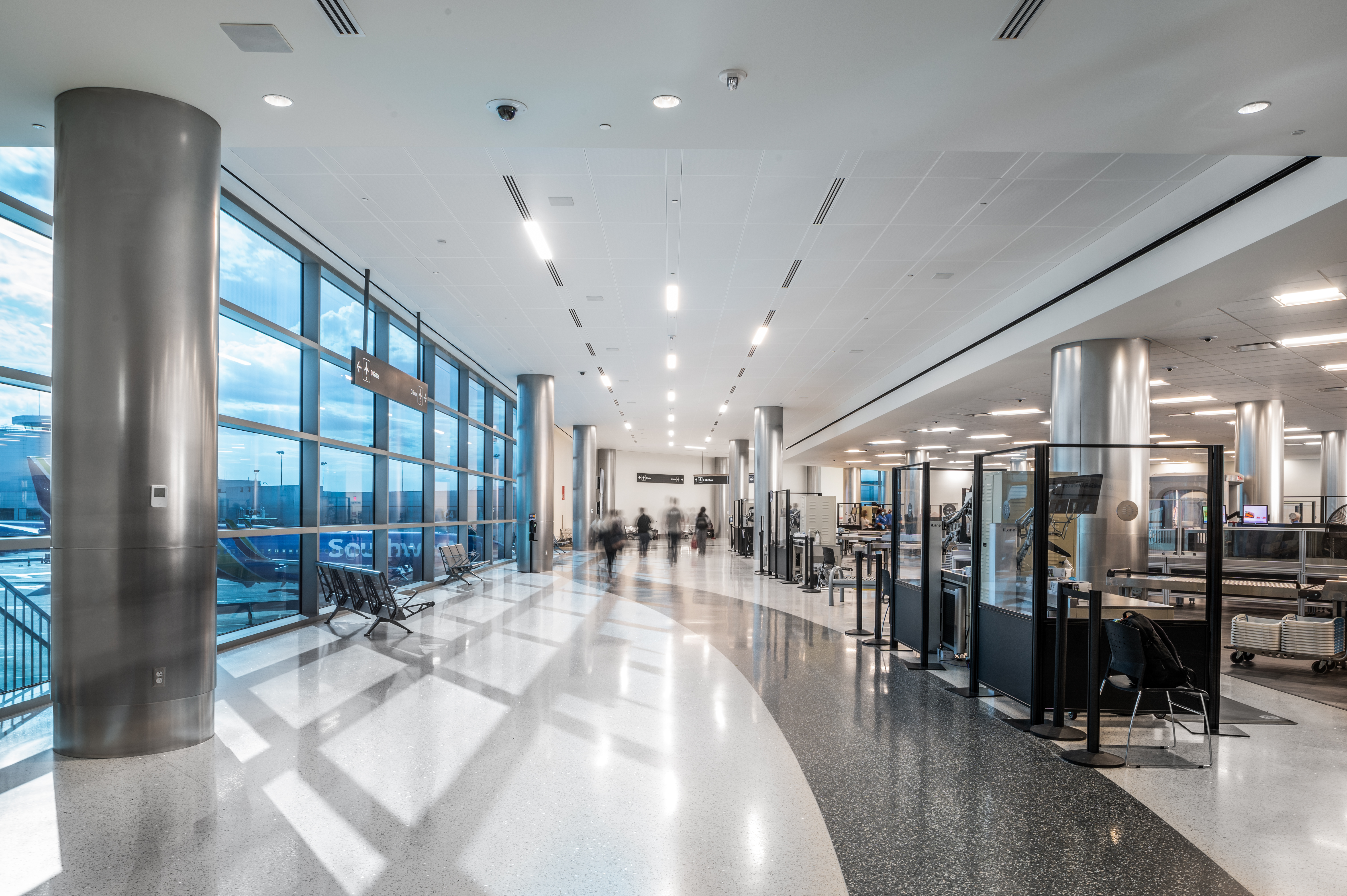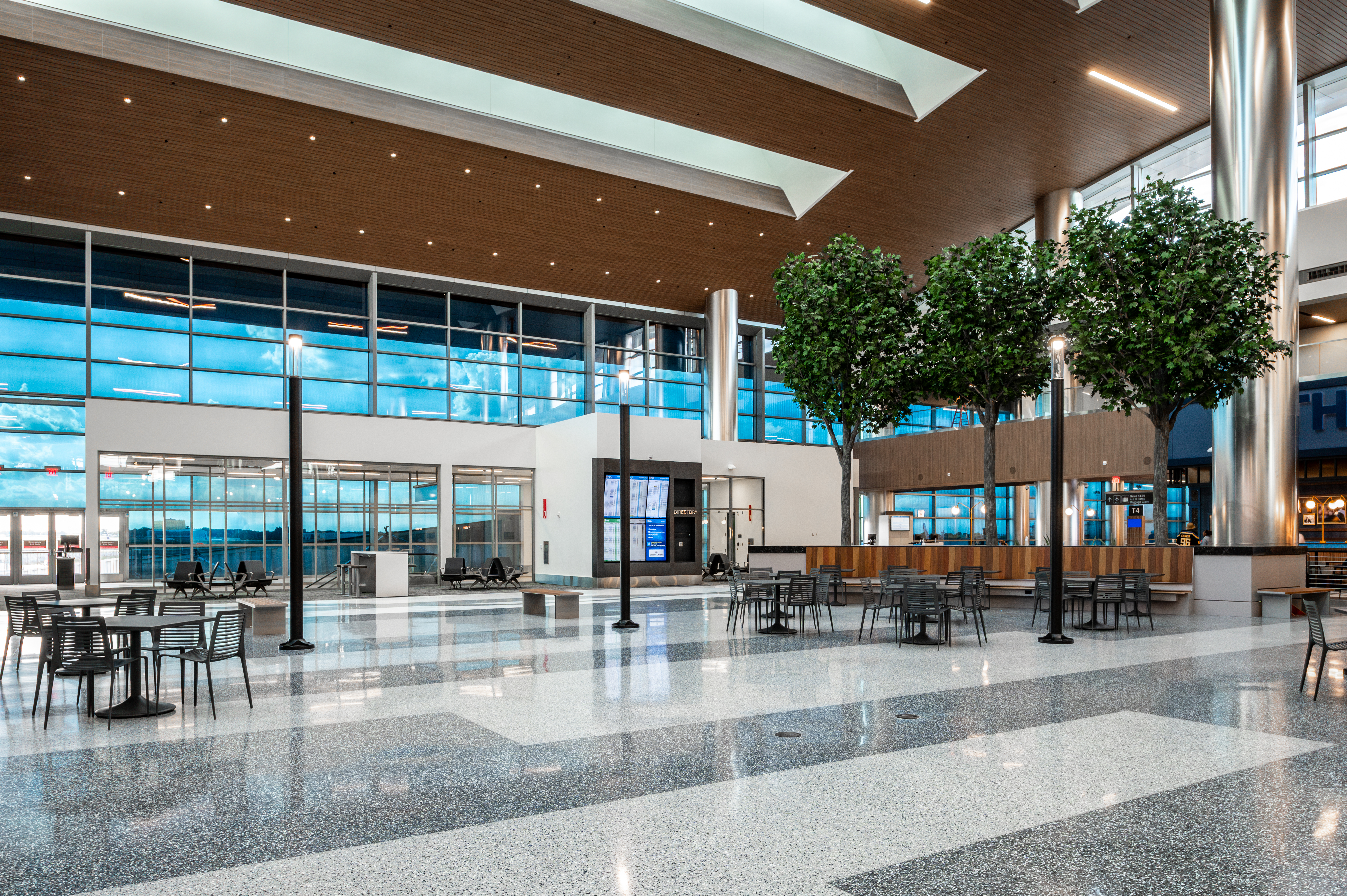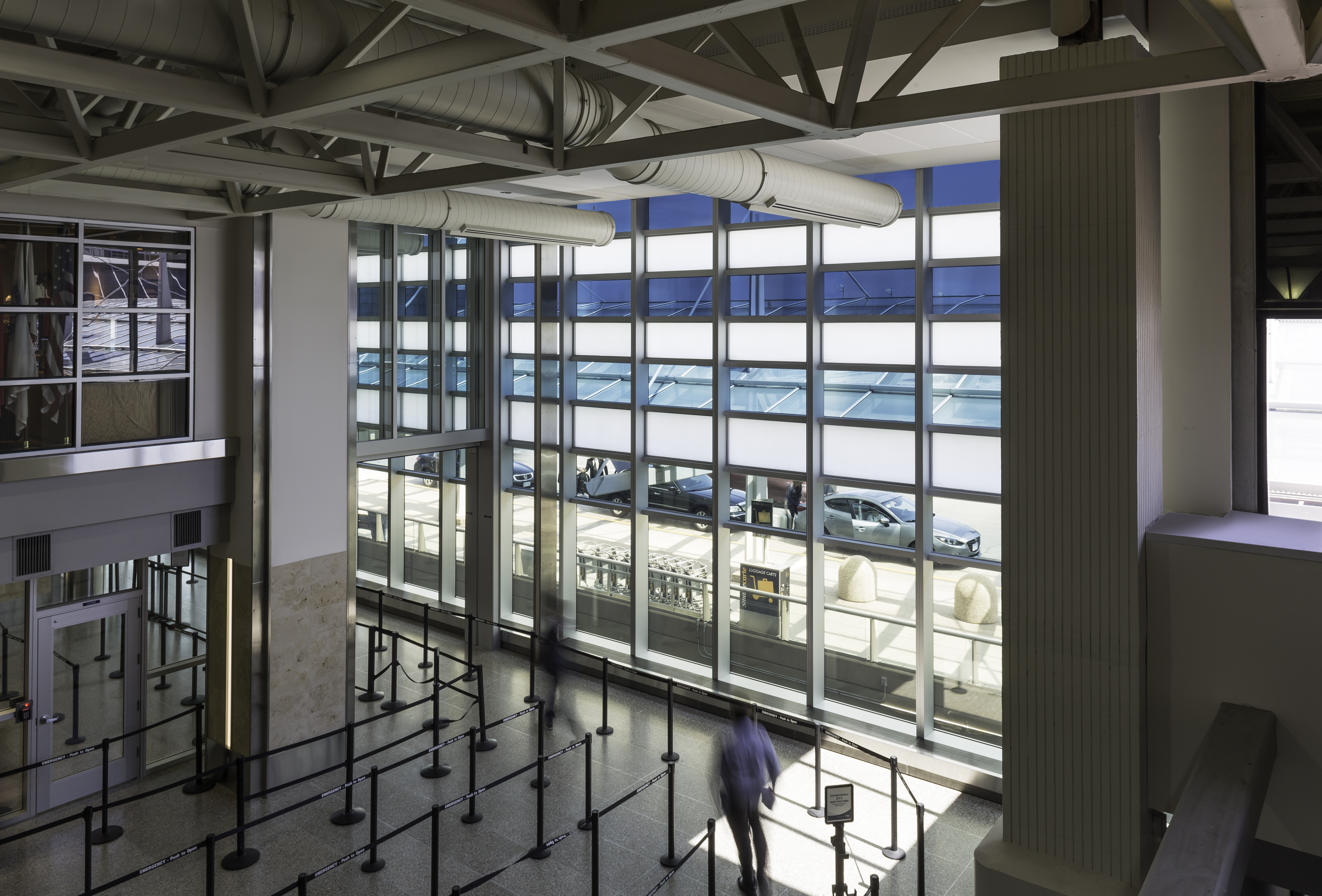4 Key Trends Impacting Airport Design in 2024
Delivering a best-in-class travel experience has always been a top priority influencing airport design. But with unprecedented funding driving the surge in infrastructure and expansion projects, aviation decision-makers and their design partners are reimagining what it means to offer an elevated passenger experience.
Why? Research shows that happy passengers are more likely to spend more on nonaeronautical purchases, underscoring the importance of creating modern, inspiring, and comfortable spaces where passengers want to be.
Let’s dive into some of the key factors influencing airport construction and design in 2024 and beyond:
#1 Modernization & Expansion of Airport Infrastructure is Critical
While demand for domestic and international travel plummeted during the early days of the Covid-19 pandemic, the tourism industry rebounded faster and stronger than industry experts anticipated. Fueled by the so-called “Revenge Travel” in 2021, passenger levels began to recover and travelers haven’t seemed to lose their wanderlust. 2024 is expected to be another milestone recovery year with an expected 9.4 billion passengers globally (102.5% of 2019 levels)1.
According to the FAA2, passenger traffic is expected to increase to 158% of 2019 levels in 2040. While this is great news for the industry, existing U.S. airport infrastructure requires significant expansion and modernization to accommodate.
But it’s not as simple as just expanding terminals and runways. Airports must also prioritize ease of navigation, efficiency, and accessibility to ensure a seamless and inclusive travel experience.

Nashville International Airport (BNA) has selected smart windows for multiple expansions including the T-Gates just beyond the Security Checkpoint.
#2 Airports Must Rise to Meet Climate Change Realities
To meet net-zero emissions by 2050, airports will be challenged to implement advanced technology and solutions that will electrify their infrastructure, reduce energy consumption, and lower both their embodied and operational carbon footprint.
Not only is this imperative to combat climate change, but it also makes good business sense. Eco-travel, or tourism that minimizes impact on the environment, used to be trendy a buzzword but travelers are becoming increasingly conscious about the environmental impact of flying. According to a 2022 McKinsey research report, emissions are now the top concern of air travelers in 11 of 13 countries polled and 40% of travelers globally are willing to pay at least 2% more for a carbon-neutral ticket3.
#3 The Airport as the Destination
Long gone are the days where travelers were satisfied with sterile, bland, and impersonal airports. Today’s passengers want bespoke travel experiences, greater flexibility, and an enhanced sense of the local culture. To elevate the pre-flight experience, many airports are looking to immerse travelers in the local community by introducing natural design elements or local art and by incorporating big names in the local cuisine.
And it’s not just the airports that are reimaging their spaces. Airlines are investing heavily to provide best-in-class lounge spaces for their frequent flyers, who increasingly want comfortable spaces where they can go to rest or be productive.
Beyond diversifying and personalizing amenities, the principles of keeping passengers happy are still deeply rooted in the basics: keep passengers comfortable and provide a stress-free airport experience.

Soaring floor-to-ceiling dynamic glass in the BNA Marketplace allows passengers dining at nearby restaurants to enjoy the light-filled atrium.
#4 Wellness-Focused Design is Here to Stay
Airports globally are looking to integrate wellness factors and amenities into their plans including natural daylighting, access to the outdoors, and biophilic design elements. Some airports are even now offering fitness centers or yoga rooms where travelers can purchase a day pass.
While expansive glazing has long been a staple of aviation design, comfort hasn’t. When occupants are subjected to excess light and glare, the results could mean discomfort and dissatisfaction. Glare can also have harmful impacts to health and well-being. An effective design that is focused on wellness also needs to factor in comfort.

Prior to the installation of SageGlass, passengers at the security checkpoints at Terminal 1 of Minneapolis-St Paul International Airport (MSP) were frequently bothered by intense sunlight and glare.
How can electrochromic glass help airports meet their objectives for sustainability and passenger experience?
The building shell is the biggest determinant of energy performance. Dynamic glass is a climate-adaptive technology that reduces energy consumption year-round. Airport owners can reduce HVAC usage from space cooling and even cut peak consumption by 25% or more. In terminal spaces that typically require space cooling year-round, this can mean a significant cost savings and major progress toward reducing operational carbon emissions.
Smart windows also deliver an enhanced passenger and employee experience by maximizing daylight and views without any of the unwanted glare or heat gain. Airports can leverage this design solution to maintain the connection to the outdoors, while promoting comfort and satisfaction
Learn more about the benefits of dynamic glass in airports.
1 Airports Council International (ACI)
2 FAA
3 McKinsey: New Opportunities for Industry Leaders as New Travelers Take to the Skies